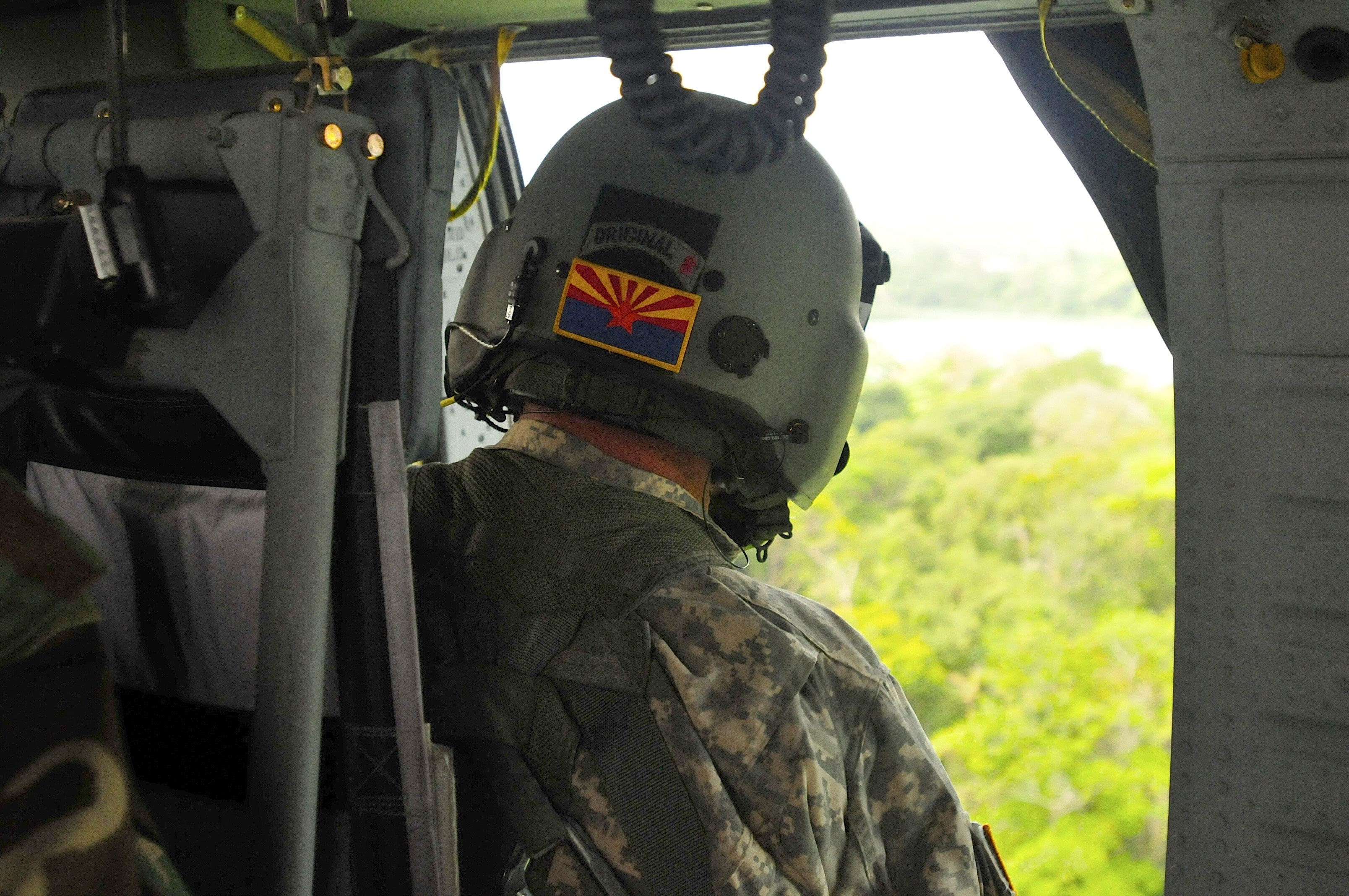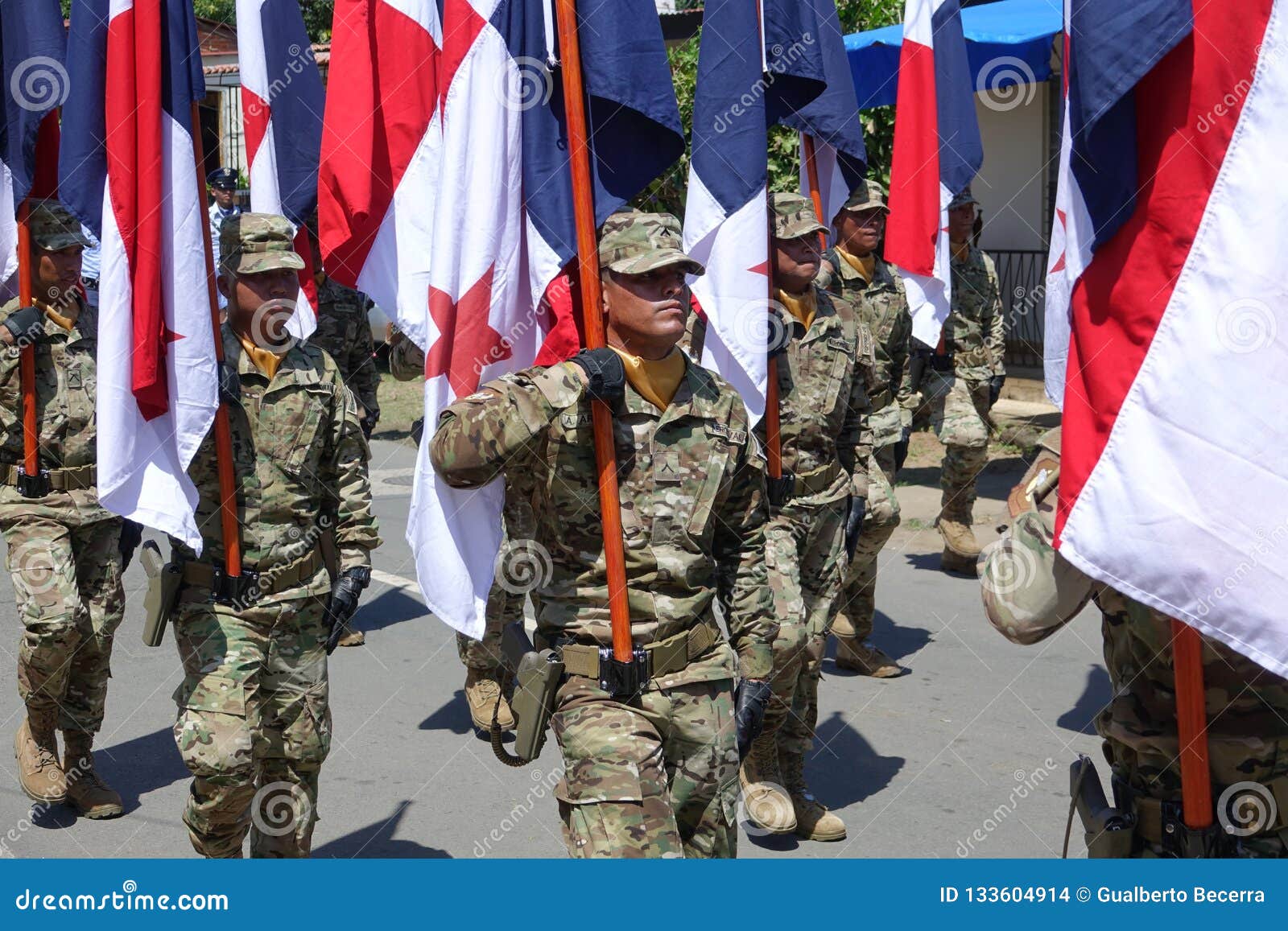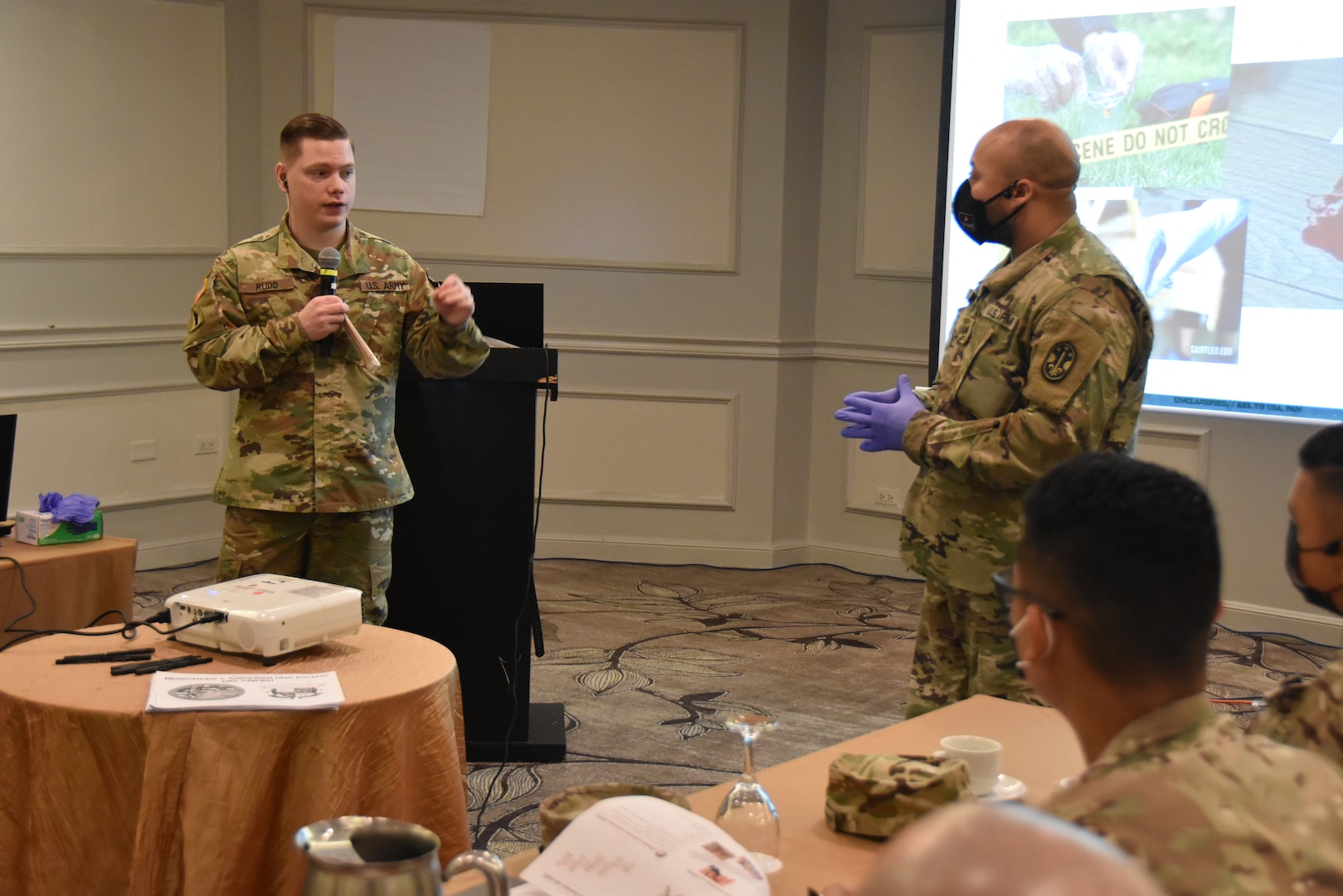Military In Panama - The department of defense classifies 20 of the overseas bases as large, 16 as medium, 482 as small and 69 as "other sites.". Among the best known are 12 in Panama, 12 in Puerto Rico, nine in Colombia, and eight in Peru, with the largest number concentrated in Central America and the Caribbean.
Within days of the Beirut disaster, President Reagan ordered the invasion of Grenada, following the overthrow of Marxist President Maurice Bishop. Planners sought to protect 600 American students on the Caribbean island, and head off the possibility of another hostage scenario only two years after the release of
Military In Panama
the Iran hostages. In addition, the Reagan administration sought to use the invasion to eliminate Cuban and Soviet influence in Grenada. U.S. forces faced greater than expected resistance and took significant casualties. Although later cited as a model for similar actions, the operation also pointed out serious
problems, including inadequate intelligence, poor communications, and inter-service rivalries. The Panama Canal was opened in 1914. Among the best known are 12 in Panama, 12 in Puerto Rico, nine in Colombia, and eight in Peru, with the largest number concentrated in Central America and the Caribbean.
The extension of U.S. base rights is also consistent with the intent of Congress. The 1979 Panama Canal Act, which incorporated the treaty into U.S. law, including a sense of the Congress resolution that the "best interests of the United States require
that the President enters into negotiations with the Republic of Panama for the purpose of arranging for the stationing of United States military forces after the termination of the Panama Canal Treaty of 1977." Following a bomb attack on a West Berlin discotheque frequented by Americans
servicemen, the Reagan administration launched a punitive raid on Libya, the suspected sponsor of the bombing. Planes from aircraft carriers and Britain targeted sites allegedly associated with the training and support of terrorists activities. The raid was also part of a larger struggle with Libya throughout
the 1980s over its support for international terrorism and its claims over the Gulf of Sidra. Although its long-term utility was debated, the attack was evidence of the Reagan administration's increasing willingness to use military force in pursuit of certain discrete, limited goals -- despite the
Weinberger doctrine. Following the deadly bombing of a Sarajevo marketplace, NATO forces launched the largest military action in the alliance's history. Two weeks of NATO air strikes, combined with a strong Croat-Muslim offensive on the ground, pushed
Bosnian Serbs to the negotiating table. In November, all the warring parties met in Dayton, Ohio and agreed to a peace settlement. the airstrikes, Painstakingly approved after years of negotiations with allies and the military, appear to support the position that limited military attacks can be
useful diplomatic tools. * Panamanian public opinion Polls taken in Panama over a period of years indicate strong and consistent pluralities in favor of a continued U.S. presence after 2000. As the staff of the House Subcommittee on the Western

Hemisphere reported on March 9, 1995, "Recent public opinion polls in Panama suggest that 82% to 83% of Panamanians would like the United States to keep some sort of military presence in Panama." Among the best known are 12 in Panama, 12 in Puerto Rico, nine in Colombia, and eight in Peru, with the largest number concentrated in Central America and the Caribbean.
Department of defense base structure report states that the DOD has property in 587 bases in 42 countries, the majority located in Germany (181 sites), Japan (122 sites), and South Korea (83 sites). An ambitious expansion project to more than double the.
* Unique training facilities The Jungle Operations Training Center at Fort Sherman provides unrivaled facilities for training in low-intensity warfare, and the adjacent naval base provides training for small craft navigation. Assistant Secretary of Defense Frederick C. Smith has stated that
these sites "will be difficult to replicate elsewhere." A sense of the Congress resolution urging the President to negotiate a new base rights agreement with Panama has been introduced in the Senate by Foreign Relations Committee Chairman
Jesse Helms (R-NC). Such a new agreement would take effect immediately after the Panama Canal Treaty expires on December 31, 1999. Involving over 27,000 U.S. troops, the Panama invasion was, up to that time, the largest American military operation since the Vietnam War.
Dubbed "Operation Just Cause," the intervention's stated goals were the protection of the Panama Canal and the lives of 35,000 Americans in Panama, as well as the promotion of democracy and an end to drug trafficking.
The powerful surprise attack quickly overwhelmed the Panamanian defense forces and resulted in the capture of its leader, Manuel Noriega. After negotiations and sanctions failed, Clinton sent U.S. troops to Haiti to restore ousted President Jean-Bertrand Aristide to power and to head off a
potential wave of Haitian refugees. A last-minute deal, brokered by former President Jimmy Carter, allowed the troops to go ashore unopposed by the Haitian military and police. Most U.S. troops withdrew within a year, though several hundred remained to pursue a broad agenda of peacekeeping, humanitarian
and engineering activities. While Clinton administration officials consistently hailed the intervention as a model effort to restore democracy and promote stability abroad, political, economic and social conditions gradually eroded. In March 1999, the U.S. commander responsible for the remaining
military personnel reportedly recommended ending the five-year military presence on the island due to continuing instability. This viewpoint is mistaken. President Clinton's decision could lead to the permanent loss of valuable military assets and seriously weaken America's ability to defend the Panama Canal.

The treaties with Panama give the U.S. the option of continuing a military presence in Panama after 2000. This option should be exercised. Over time, it would replace and absolve the 1903 treaty. An installation is defined as a military base, camp, post, station, yard, center.
12 rows this is a list of United States military installations in Panama, all of which fall within the. The end of the Cold War has led to a U.S. withdrawal from many foreign bases, particularly those that are no longer needed.
Certain bases in the Isthmus of Panama, however, continue to serve America's interests. The decision to move the headquarters of Southern Command to Miami is irrevocable, but the decision on whether to withdraw all military facilities from Panama is still
open. Retaining these bases would be a statement that the United States remains determined to safeguard its interests in the region. Congress should press the Administration to maintain a U.S. military presence in Panama. List Of Current Us Military Bases In Panama 2022. The air field base was originally called biggs air force base from 1947 to 1966 consisting of 400 acres.
Presidio of monterey (dli/flc) travis air force base. Southern Command, with a current strength of 8,800 troops, has been based in Panama since World War II. It coordinates everything military and anti-drug operations in Latin America and is
responsible for protecting the Panama Canal. Although the traditional threat of a foreign naval attack on the Canal Zone has virtually disappeared, the United States still needs to be able to project military power in the Southern Hemisphere.
The worldwide upsurge in political instability and state-supported terrorism that has followed the end of the Cold War makes it necessary to provide rapid troop and logistical transit between the oceans. The need to conduct surveillance or to pursue actual and potential adversaries
also requires immediate access to both oceans. Such possibilities make it essential that the U.S. retain a measure of conventionality military power in the Isthmus of Panama. * Intelligence and counter-drug operations Panama is located in the center of a major drug transit area.
U.S. facilities there are well-situated for collecting intelligence on drug trafficking and for supporting interdiction efforts. Anti-drug operations will remain a critical feature of U.S. policy in Latin America. The secure airport at Howard Air Force Base is
available for logistical infrastructure and support for airborne operations. Other facilities in Panama, especially the electronics capabilities at Galeta Island, give the U.S. a unique ability to conduct surveillance of maritime traffic, drug smuggling, and potential terrorist activities in the region.

Sources: Congressional Research Service, "Case studies on use of force by US, 1950-91" Report 92-757-F (1992) 106 pp.; Richard N. Haass, Intervention: The use of American military force in the post-Cold War World (Washington: The Carnegie Endowment, 1994) 259 pp.
Base operations and maintenance are increasingly being outsourced to. Presidio of monterey (dli/flc) travis air force base. But the Pentagon retains access for military flights into and out of Panama, including a contract to transport cargo and passengers between Honduras, Panama, and dirt strips in.
The 104th Congress could force a reconsideration of the President Clinton's decision by passing a sense of the Congress resolution that the U.S. needs to retain a military presence in Panama after 2000. Such a resolution, while non-binding, would urge the
Administration to negotiate an extension of basic rights at least some of the 14 U.S. military installations in Panama, helping to ensure a measure of power projection capability in an area of vital national interest to the United States.
The panama canal was built by the us army corps of engineers between 1904 and 1914. Located about 40 miles northwest of the philippines' capital, manila, the air base was originally constructed by the u.s. Army air corps before the second world war.
And remaining us military bases were transferred to panama by the end of 1999. Department of defense base structure report states that the dod has property in 587 bases in 42 countries, the majority located in germany (181 sites), japan (122 sites),
and South Korea (83 sites). The Vietnam conflict continues to be the touchstone for both the military and policy makers committed to avoiding future foreign military "quagmires." As the United States made the seemingly inexorable transition from being advisors
to undertake covert operations, bombing and deploying ground troops, the strategy of "incremental escalation" emerged as the military's bête noire. Military frustrations during the "war without fronts" were heightened by diplomatic and humanitarian constraints on operations in the North
Vietnam. Protest and resistance at home and abroad underlined the pitfalls of pursuing prolonged, costly and divisive wars alone. And the ultimate defeat of South Vietnam in 1975 strengthened the resolve of those who would avoid
"unwinnable" limited wars in the future. Under the terms of the 1977 Panama Canal Treaty, the United States must evacuate its troops from Panama by December 31, 1999. Under the companion Treaty of Permanent Neutrality, which becomes
effective when the Canal Treaty expires, the U.S. retains the right to protect and defend the Canal after 2000. The U.S. instrument of ratification accompanying the Neutrality Treaty allows both sides to negotiate an extension of the agreement giving the U.S.
the right to station troops in Panama and enjoy basing rights there. The government of Panama agreed to these terms. Thus, both countries agreed explicitly to the right of U.S. forces to remain in the Canal Zone after 2000.
Toward the end of the Bush administration, the United States sent approximately 25,000 troops to Somalia to assist the United Nations with the distribution of famine relief supplies. By the time Bill Clinton took office in 1993, U.S.
troop levels had been vastly reduced, largely replaced with operating forces under the UN flag. However, as UN clashes with local "warlords" increased, American troops became engaged in policing and wider peacekeeping operations. After 18 U.S.
Rangers were killed in a firefight in Mogadishu on October 3, 1993, the United States briefly reinforced its troops but retreated from the more ambitious "nation-building" agenda previously outlined by Secretary of Defense Les Aspin. Criticized for having made decisions that may have
contributed to the disaster, Aspin resigned two months later. * Efficiency and low cost The U.S. conducts a number of important non-military missions, including humanitarian and civil-military programs, throughout Latin America. These missions would benefit materially from the
lower transport costs and greater efficiency afforded by centralized logistics bases inside Panama, especially Fort Kobbe, where the Theater Equipment and Maintenance Site (TEAMS) is located. This facility supports disaster relief missions and others civic and humanitarian services.
Twice during the early 1980s the United States deployed troops to Lebanon deal with the fallout from the Israeli invasion. In the first deployment, U.S. marines helped oversee the withdrawal of the PLO from Beirut. In the
second deployment, 1,800 marines were sent as part of a multinational force after Israel's Lebanese allies massacred civilians in the Palestinian refugee camps. Given a vague mandate to restore order, support the weak Lebanese government, and work for the withdrawal of all foreign forces, the troops
slowly became entangled in the Lebanese civil war. On October 23, 1983, a truck bomb exploded at the vulnerable marine headquarters, killing 241 marines -- the largest loss of life in a military operation since Vietnam.

For the military, Beirut becomes a symbol of ill-considered political objectives and poorly defined rules of engagement. Citing Serb atrocities and ethnic cleansing in Kosovo, the U.S. and NATO unleashed air attacks on Serbia after the failure of the "mini-Dayton" peace
talks held in Rambouillet, France. President Clinton outlines no "exit strategies" and warns that air strikes will continue as long as necessary. From the beginning, the Clinton administration ruled out sending U.S. ground troops to the Balkans, although debate over the utility of air power alone repeatedly
revives the issue. Vast floods of refugees spill into neighboring countries, threatening to enlarge the crisis and sparking criticism of the lack of contingency planning by NATO. Sandstorms and equipment malfunctions caused the cancellation of the surprise
attempt to rescue over sixty American hostages held by revolutionary students at the U.S. embassy in Tehran. Failure turned deadly when eight Americans were killed after a helicopter and a transport plane collided at a remote desert
staging area. The disaster reflected military disarray and lack of preparedness and, after Ronald Reagan took office, helped launch the largest peacetime defense build-up in the nation's history. Since 1980, there have been no active duty units from any branch of the armed forces stationed here.
Biggs Army Air Field at Fort Bliss in El Paso, TX. Military forces departed, and bases were closed by treaty at the end of 1999. To force Iraq out of Kuwait, George Bush formed a large and diverse
international coalition and deployed over a half-million U.S. personnel to the Persian Gulf region as part of an allied force. The success of Operation Desert Storm set a new high-water mark for the military and underscored the
principle of committing overwhelming force to clear and achievable objectives. Both allied and popular support was largely maintained throughout the campaign. In this way, the Gulf War appears to validate the military doctrine espoused by Joint Chiefs of Staff Chairman Colin Powell.
This is where the puerto rico national guard has their officer candidate school on the base. The department of defense classifies 20 of the overseas bases as large, 16 as medium, 482 as small and 69 as "other sites.".
panama military size, panama public forces, panama defense forces, us military operations in panama, panama city panama military base, army base panama canal, panama military base, panamanian air force


0 Comments